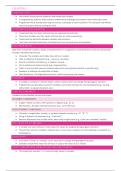Summary
Summary Summaries: Coding and Robotics CATE 123
- Institution
- North-West University (NWU)
CATE 123 is a new module to the NWU as it is related to a new subject brought in by the South African Department of Education namely coding and robotics. This is a complete summary of the information discussed in the module.
[Show more]




